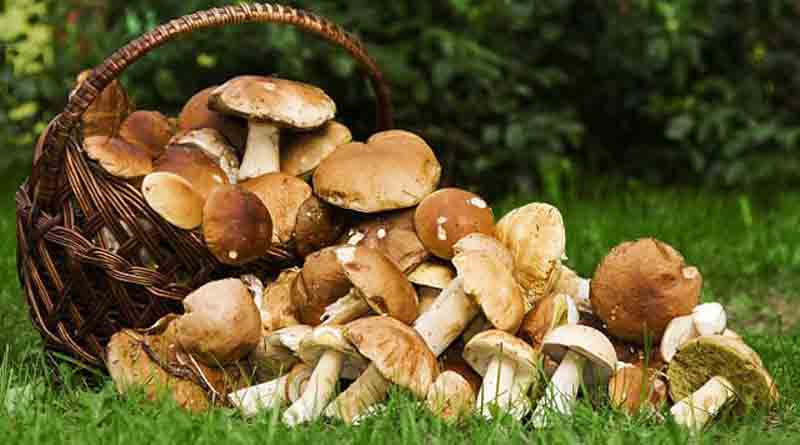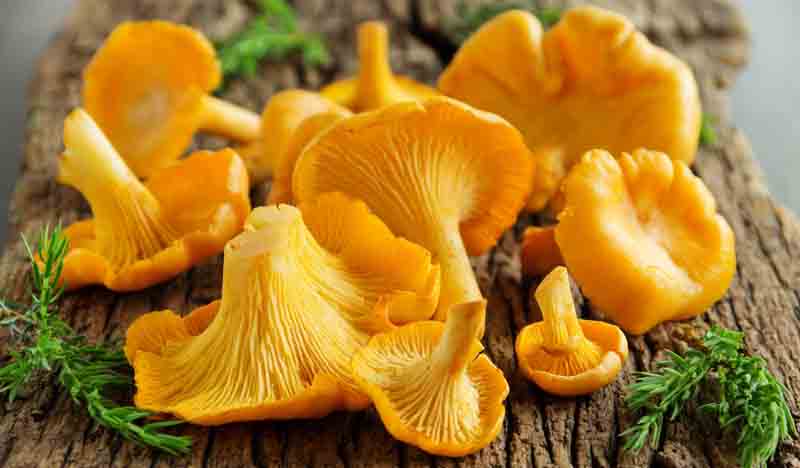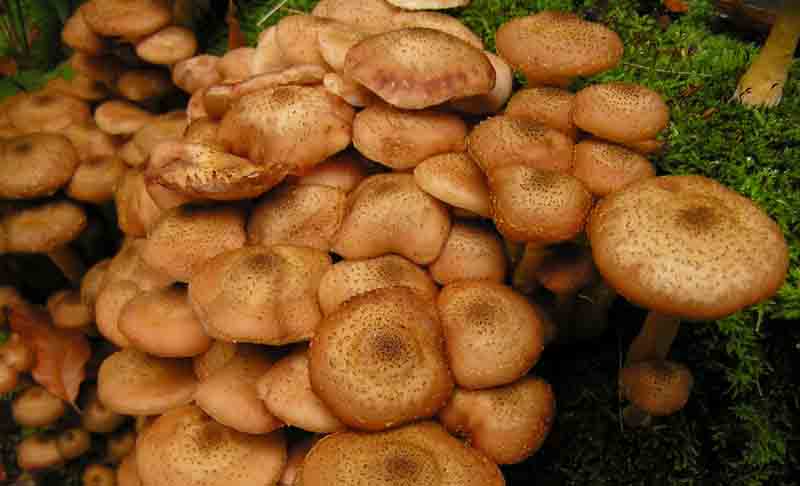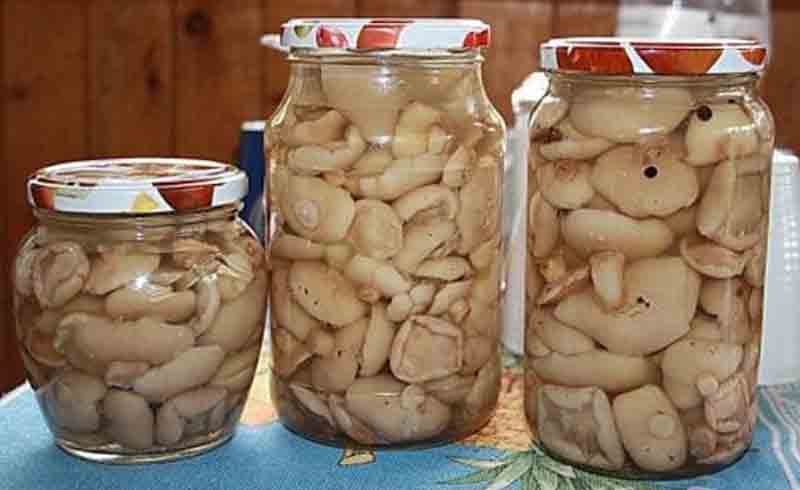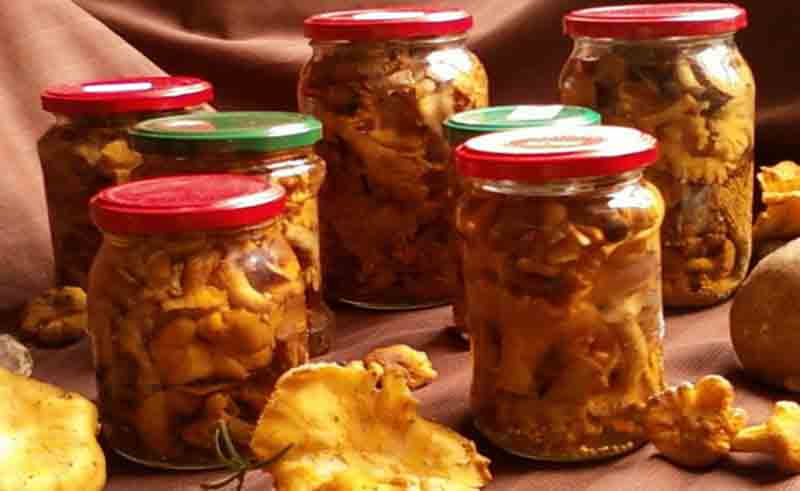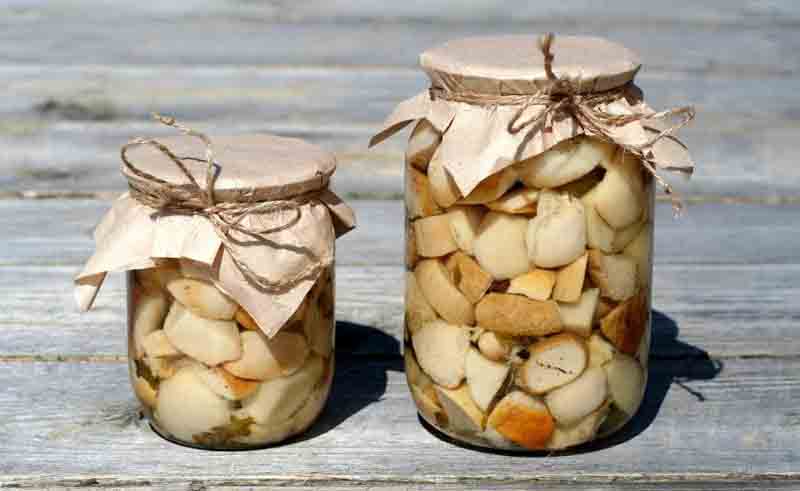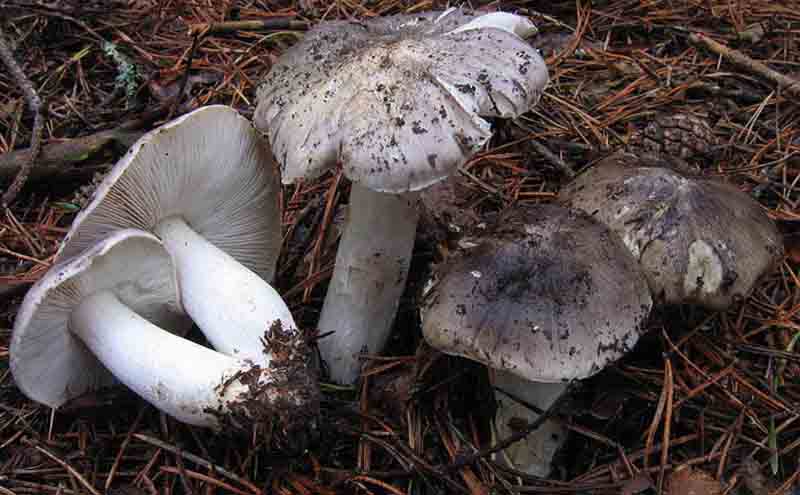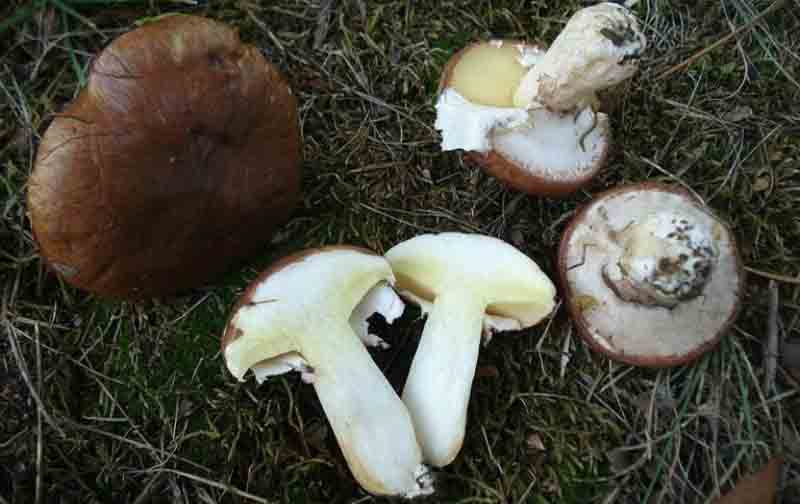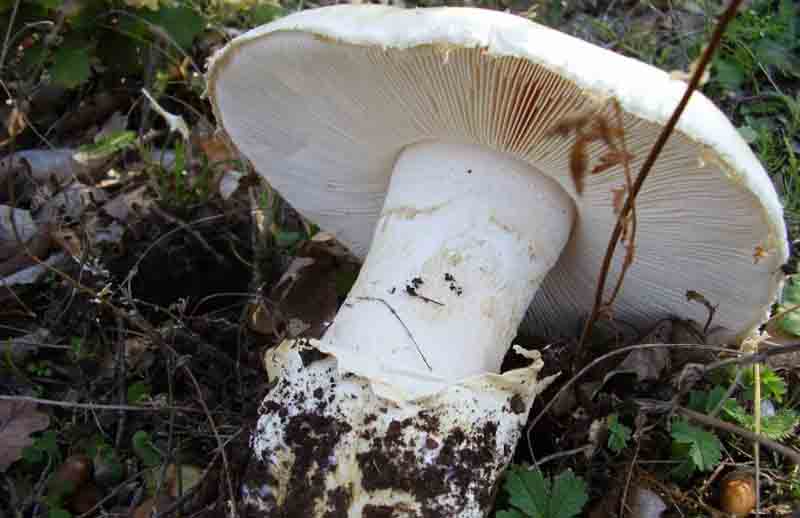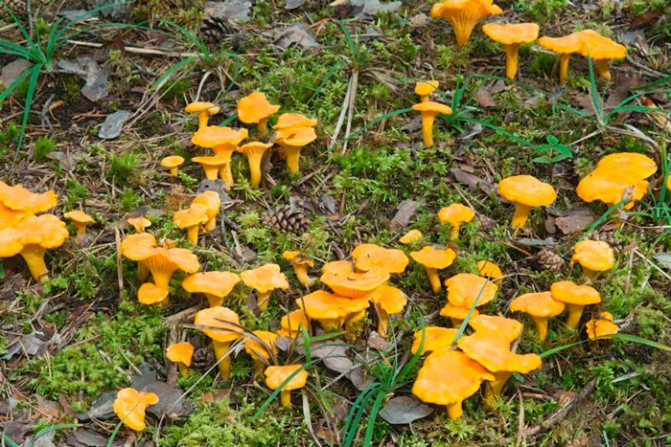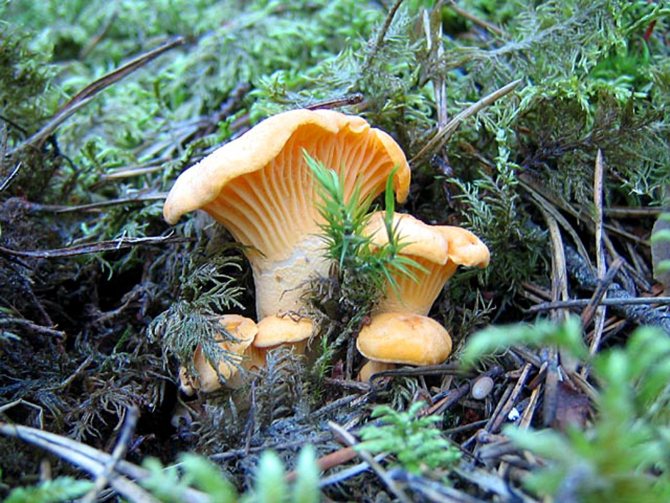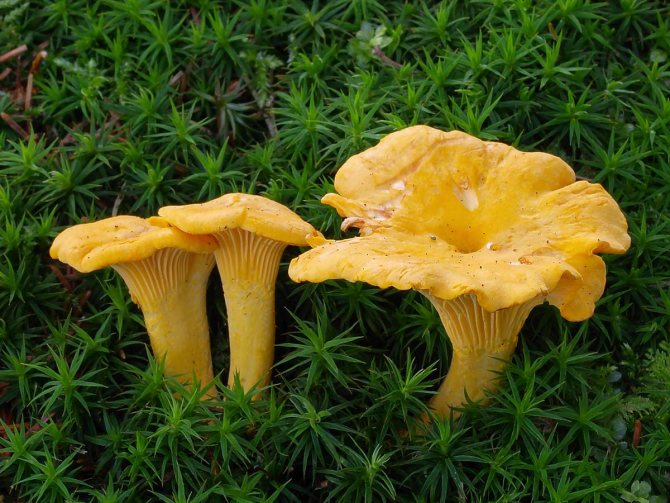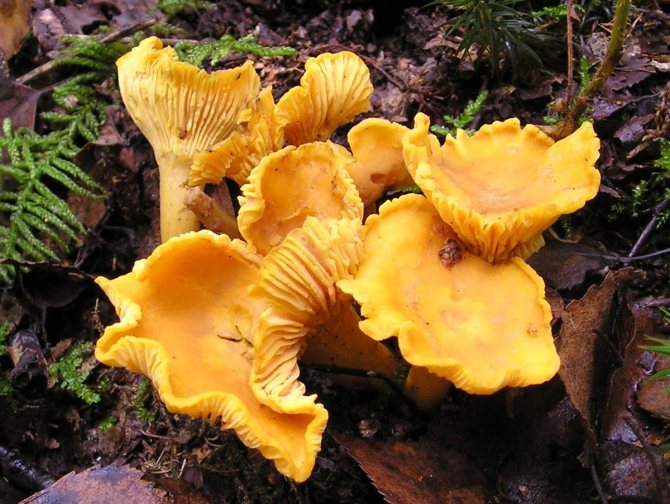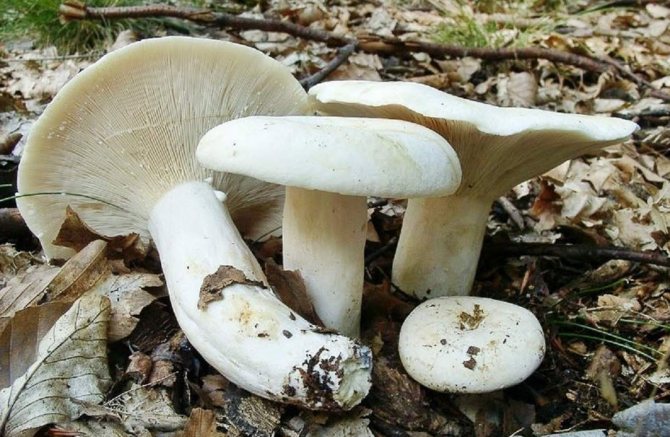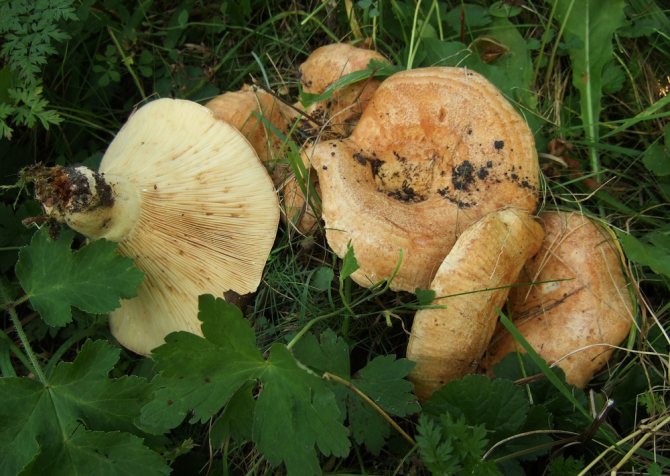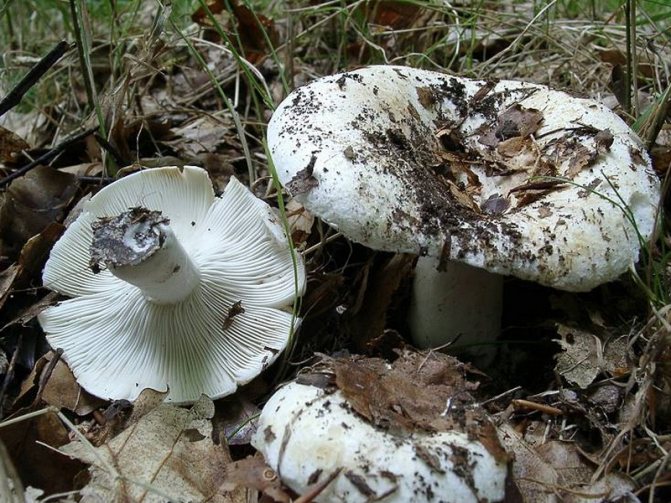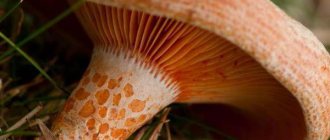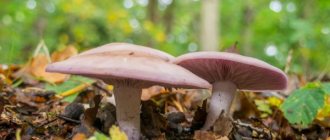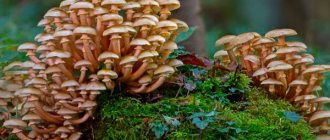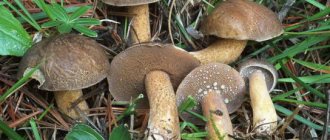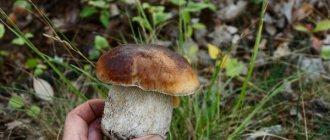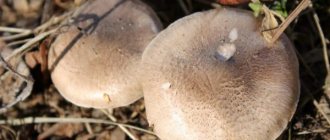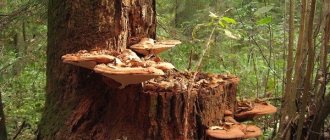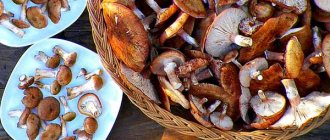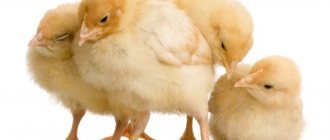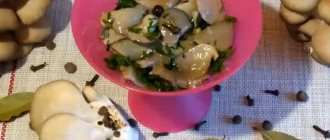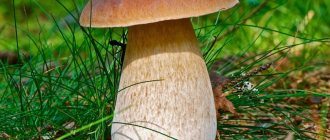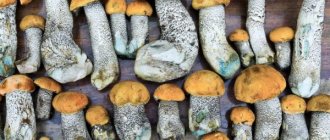Mushrooms
0
1142
Article rating
The expanses of the Crimea are distinguished by rich vegetation and fertile soil. The best mushrooms of Crimea grow in mountainous areas at an altitude of 200-700 m, in forests, in the steppe zone and on the plateaus of the peninsula.
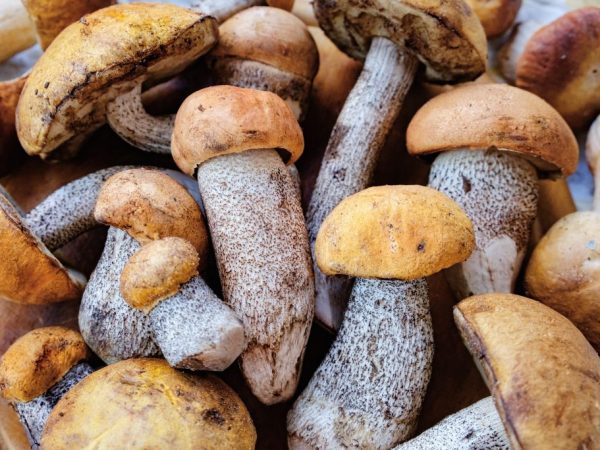
Mushroom picking in Crimea
Crimean poisonous mushroom # 1 - satanic mushroom
This is a relative of the generally recognized king of the mushroom kingdom - boletus, is not deadly, but can cause serious gastrointestinal upset. It's funny, but the mushroom got its ominous name from Gerold Lenz, a German mycologist who described it in detail in 1831. At this time, the researcher felt very sick and, knowing about the poisonous properties of the mushroom, considered the cause of the malaise to be its effect on the body.
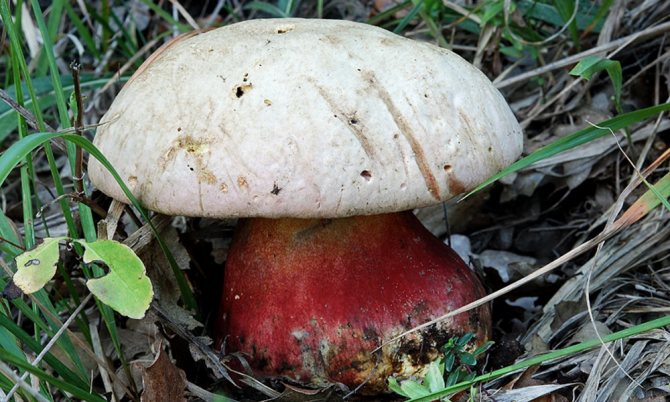

The main threat for a novice mushroom picker is an imposing and very appetizing appearance, tempting to put a mushroom in a basket. But such carelessness can cause nausea, vomiting, severe abdominal pain, diarrhea, low blood pressure, dehydration, and other negative consequences. And its use repeatedly or in large quantities will lead to liver or kidney damage.
In Crimea, devil's mushrooms grow from July to October in oak and mixed forests of the foothills. There you can also find similar to it and the same toxic boletus: pink-purple and pink-golden.
Be very careful! The satanic mushroom is very similar to edible boletus, especially oak mushroom.
Description of the mushroom site
Mushrooms in Crimea can be found at the Ai-Petrinskaya Yayla. The forests in Luchisty in the region of Demerdzhi mountain give a rich harvest.
A quiet hunt in the Bakhchisarai forests will be successful. In the East, mushroom places are located in Feodosia. Crimean mushroom pickers harvest in the steppe zone in the Donuzlav and Sasyk estuaries. For mice they go to the village of Kolchugino and to the area of the astrophysical observatory. They go to the villages of Zelenogorskoye and Stroganovka for boletus.
Camelina is hunted near the village of Rybachye, and chanterelles are hunted in the village of Mramorny.
Crimean poisonous mushroom # 2 - knight's mushroom or red fly agaric
Sometimes in the summer and autumn in the forests of the mountainous Crimea, you can also find fly agarics. Catchy, of various shades of purple or red, large caps covered with white flakes on graceful legs with a flirty apron gave it the name - Amanita muscaria.
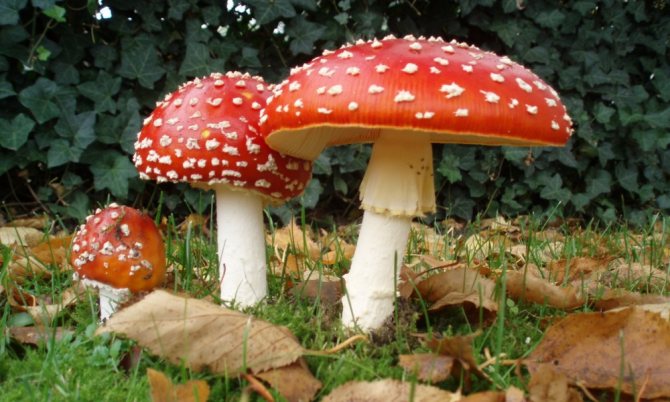

Such a striking appearance made this mushroom popular in folk art, and even mushrooms in playgrounds are invariably painted in its colors.
But the noticeable attraction of the mushroom in this case is a clear warning: wait, I'm poisonous! Since the 13th century, fly agaric toxins have been used to kill flies, hence its Russian name.
The poisons contained in the fly agaric affect the nervous system, causing strong hallucinations, this property was used by shamans of different nations to enter a trance. In medieval Europe, it was also called the knight's mushroom.
Often before a tournament or battle, many knights consumed small doses of its dried hats, losing their sense of fear and becoming less susceptible to pain. Despite its strong toxicity, the fly agaric has found wide application in folk medicine.But be careful - self-medication with its drugs is dangerous, the mushroom is still very poisonous, and severe poisoning is possible.
The main symptoms of severe mushroom intoxication: nausea, dilated pupils, blurred vision and hallucinations. In severe cases: delirium, convulsions, coma.
Crimean poisonous mushroom No. 3 - panther fly agaric
This mushroom is less noticeable, inferior to its counterpart not only in brightness, but also in size. The hats, dyed gray or olive-tinted brown, are covered with numerous white flakes, giving it a similarity to the spotted pattern on the skin of a leopard.
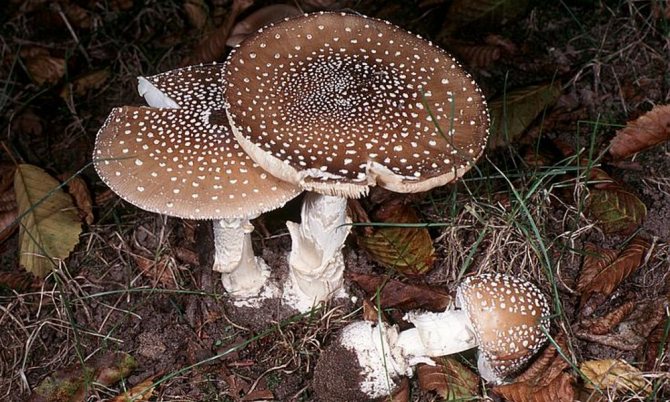

Despite his modest appearance, the set of poisons and their concentration are several times higher. There is a popular belief that because of the strong toxicity near the fungus you will never meet flies and other insects, which, according to legend, die even if they smell it. Poisoning symptoms are similar to the symptoms of poisoning with fly agaric, due to the high content of poisons, they occur faster and are more acute, requiring urgent medical intervention. On the peninsula, the panther fly agaric grows in hornbeam-beech, oak-hornbeam and mixed forests in the summer-autumn period.
Attention! The mushroom is easily mistaken for edible amanita: pink and tall.
Useful properties and restrictions to use
Single barrels are valuable not only for their taste, but also for their high content of nutrients. In terms of the amount of vitamins and amino acids, representatives of this variety are close to meat and dairy products. The only vegetables that contain more protein than single casks are legumes.
Eating fruits can also help cope with such diseases and conditions:
- decreased immunity;
- atherosclerosis;
- high cholesterol.
One-sided casks contain a huge amount of vitamins (especially of group B), antioxidants, beneficial acids. Their effectiveness in the treatment of anemia has been proven, and can be used to influence the symptoms of liver, kidney, and eye diseases.
Read also: A bottom filter for a well is needed or not
The mushroom has a unique tonic. Some athletes use one-barrel for energy intake before competition, as a natural alternative to doping drugs. Like other mushrooms, one-barrels are not included in the diet of children, pregnant women, lactating women, patients with gastrointestinal pathologies.
Crimean poisonous mushroom No. 4 - patuyard fiber
A small mushroom with a cap diameter of 2-7 cm, named after the French pharmacist - mycologist, will easily give a head start in its toxicity to the red fly agaric that looks like a real giant against its background. Both mushrooms contain the same toxic substances, only their concentration in the fiber is 20 times higher!
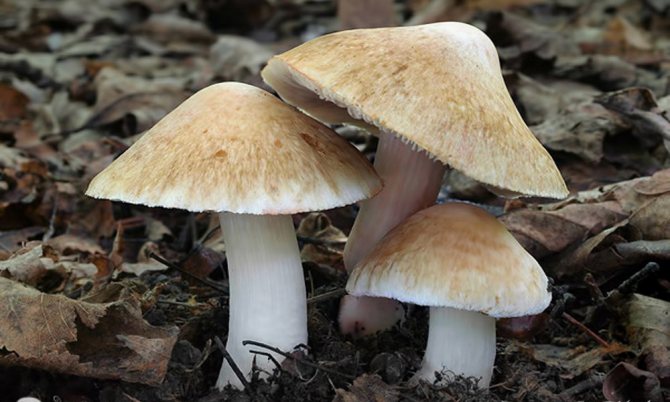

You can meet this mushroom from May to October in the beech or hornbeam-beech forests of the Crimean mountains (singly or in small groups). The color of the silky-fibrous cap changes with age from white or light cream to reddish-brown.
Light hats, cut off and lying in a basket for several hours, become covered with bright red spots over time.
Another interesting feature of the mushroom is its aroma, which can cause profuse salivation in lovers of intoxicating drinks. At the fault, the pulp of mature mushrooms has a pungent smell of alcohol, but you shouldn't rejoice at this, no matter how Bacchus fan you are - you have received the right signal of mortal danger.
Poisoning symptoms the same as from the red and panther fly agarics, only they are much more pronounced and, if you do not provide medical assistance for half an hour, a lethal outcome is almost inevitable.
In Crimea, there are such related types of fiberglass: curly, fissured, earthen - having a similar appearance, they contain a lower concentration of poisons, but, nevertheless, remain dangerous mushrooms.
Attention! Novice mushroom pickers may confuse fiber with some types of mushrooms or russula.
Recipes and cooking features
The most common and easiest way to cook one-sided casks is to marinate. To do this, you will need to rinse well and clean the fruits of earth, sand, and grass residues. After that, the water should be boiled - the mushrooms should be filled up only after boiling. On average, they need to be cooked for no longer than 30-40 minutes, while occasionally stirring and skimming. The recipe for marinade for steppe mushrooms is very simple.
For cooking, you will need the following ingredients (per 1 liter of water):
- 3 teaspoons of vinegar;
- 2 tablespoons of crystal sugar and salt;
- a couple of bay leaves;
- pepper and cloves to taste.
As soon as you see that the fruits have settled to the bottom of the pan, you can remove them from the heat and put them in jars, immediately pouring them with a pre-prepared marinade. Then roll up the cans and put them upside down, wrap them up.
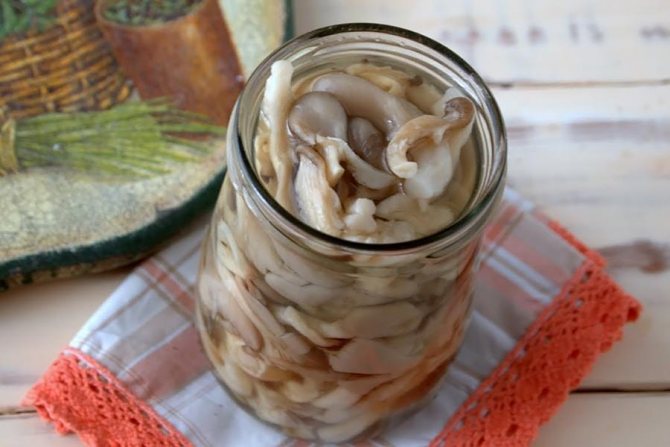

Pickled oyster mushrooms
You can also make delicious hot sandwiches, which are perfect for a delicious breakfast, soup, and as an appetizer on a festive table. To prepare a dish, you need to take:
- slices of white bread or toast loaf;
- a small amount of vegetable oil for frying.
- smoked bacon;
- onion;
- mushrooms (about 200 g);
- hard, melting cheese (100-150 g is enough);
- sour cream and spices (salt, pepper, etc.) to taste.
Answers to common questions
In the process of preparing one-barrels, housewives often have difficulties. We have collected the most frequently asked questions and answers to them from experienced chefs:
Single-barrels are common in the southern regions, most of them in the Crimea. The species bears fruit for a very long time and the main criterion for yield is good humidity in the place where the species grows. A distinctive feature of the single-barrel variety is that they live in open areas, in the steppes, and not under tree crowns.
This variety is considered one of the most valuable, not only because of its taste characteristics, but due to the large amount of nutrients. Single-barrels are used in the treatment of many diseases, they are eaten in pickled, dried, fried form. They can be used to prepare many everyday and gourmet meals.
Fungi are eukaryotic organisms lacking chlorophyll. They differ from the lower plant and animal species anatomically, biologically and morphologically. The article presents edible and poisonous mushrooms of the Crimea. We invite the reader to read their description and see photos. There are many mushrooms on this peninsula, and they grow in a variety of places: from the steppe to forests and plateaus.
Crimean poisonous mushroom No. 5 - whitish talker
Small, only 1.5-4 cm in diameter, but neat snow-white caps of this mushroom, growing in picturesque groups against a contrasting background of litter of mixed or pine forests of mountain Crimea, look very attractive and are often found from September to November.
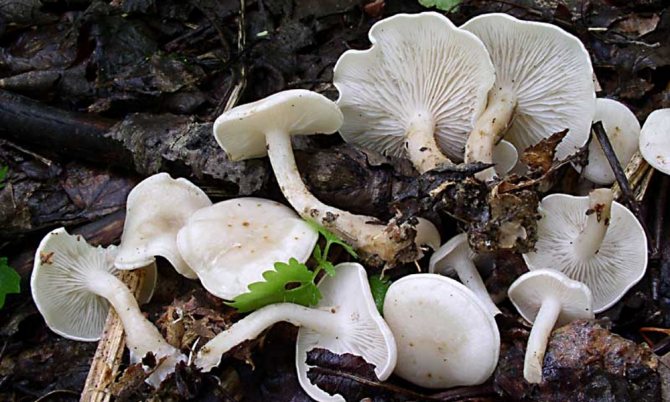

Visible from afar, possessing a pleasant smell and taste, they seem to beckon a mushroom picker: take me, please, eat me - you won't regret it! But, having made this oversight, you will have to repent without fail. Despite its fragile graceful beauty and external harmlessness, the mushroom is very poisonous and has a high content of muscarine toxins, the concentration of which is many times greater than in the red and panther fly agaric.
Attention! The mushroom is easily confused with some types of edible talkers, which have small caps.
Crimean poisonous mushroom No. 6 - wax talker
It differs from the previous species in its large cap size - 4-10 cm and off-white color, at a more mature age - creamy and yellowish, often with well-recognizable waxy spots, for which they were given such a name.
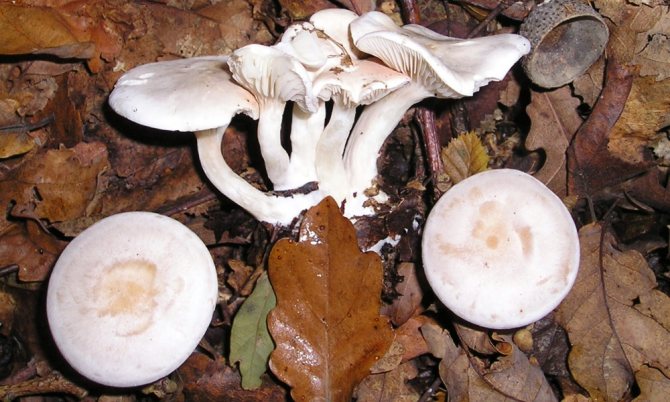

Fertile bodies form in May-October in deciduous and mixed forests of the mountainous and foothill part of the peninsula.For the "great" mushroom pickers, who rely not on knowledge, but on the method of determining the edibility of a mushroom by smell and test on the tongue, we remind you once again that this method does not work at all.
As in the case of her relative described above, the waxy talker has a very pleasant taste and aroma, but the concentration of poisons in it is even greater, and many experts consider the mushroom to be deadly.
Symptoms of mushroom poisoning: profuse sweating, vomiting, decreased heart rate and pressure, and the victims do not have a loss of strength, but, on the contrary, they become aggressive, frenzied.
In the literature, there is evidence, as in the case of the red fly agaric, that in the old days the warriors, taking a small amount of broth from the talker, became immensely brave and unstoppable on the battlefield.
Attention! This mushroom can be mistaken for edible ryadovka May, podvishen and some types of edible talkers.
Answers to common questions
The mushroom season in Crimea is long - from early spring to late autumn. Such an undeniable advantage, combined with a variety of species, ensures constant attention to mushroom picking by both experienced mushroom pickers and amateurs. Searches can be made both in the organic-rich steppe and in the mountainous area, which allows you to better understand the wonderful nature of the peninsula. But before going on a mushroom hike, you need to thoroughly study their description.
“>
No related posts
Crimean poisonous mushroom No. 7 - sulfur-yellow false foil
"Honey mushrooms are very friendly guys" - this is how this mushroom is characterized by a Russian proverb. Indeed, for many lovers of quiet hunting, their large, dense families have become one of the most coveted trophies found in the forest. However, this friendly community also has its own false representatives capable of causing serious harm to a person.
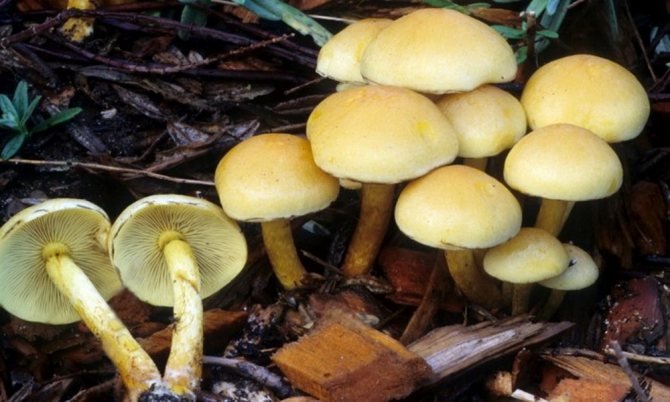

The most dangerous representative is a sulfur-yellow honey fungus, which got its name for a bright color similar to the color of the indicated chemical element. You can meet from September to December in the forests and parks of the peninsula.
Very often on stumps, a little less often on living trees or at their base, they form large dense groups of fruit bodies.
Initial signs of poisoning: continuous vomiting, frequent loose stools, weakness, increased sweating. Headaches are possible. The toxins of the fungus are not destroyed during heat treatment and are especially dangerous for the elderly and weakened people, in some cases they can be fatal.
Attention! The mushroom is sometimes confused with edible honey agaric species: autumn, poplar, and gray-lamellar false foams. Moreover, it often grows next to autumn honeydew. They sometimes seem to be intertwined with each other, and here you need to be especially careful. Not every mushroom picker is able to distinguish them.
Chanterelles
Another name is cockerels. The lands of the Simferopol region are rich in them. There are many of them near the village of Mramornoye. Also mushroom pickers go to the forests of Belogorsk, Kirov, Bakhchisarai districts.
p, blockquote 19,0,0,0,0 ->
Chanterelles grow in numerous groups in sunny places, in meadows or near clearings. They are also found in moss, among birches, pines, and firs. Appear from the beginning of June. You can collect it all summer before the first autumn cold weather.
p, blockquote 20,0,0,0,0 ->
A distinctive feature of the structure: the fungus does not have a pronounced transition from the stem to the cap. Homogeneous color: yellow (shades vary from light to dark, almost orange).
p, blockquote 21,0,0,0,0 ->
The hat has an irregular shape with wavy, unfolded edges that form a depression in the center. But its surface is absolutely smooth. The leg is lent from top to bottom, the length is about 5 cm. The flesh is fleshy, dense, with a slightly sour taste. When pressed, it becomes reddish. The smell is weak.
p, blockquote 22,0,0,0,0 ->
It must be distinguished from a false chanterelle, in which the cap has no bends and resembles small funnels. In addition, their color is always orange, closer to red. The yellow hair man also looks like a chanterelle. It is a yellow edible mushroom. It has a fleshy cap and a thicker white leg.
Crimean poisonous mushroom No. 8 - brown-red lepiota
This mushroom can be described in the words of the Russian proverb: "Small and smart." Indeed, its caps, covered with concentric circles of scales of an easily recognizable cherry-brown color, are quite small, only 2-5 cm in diameter.
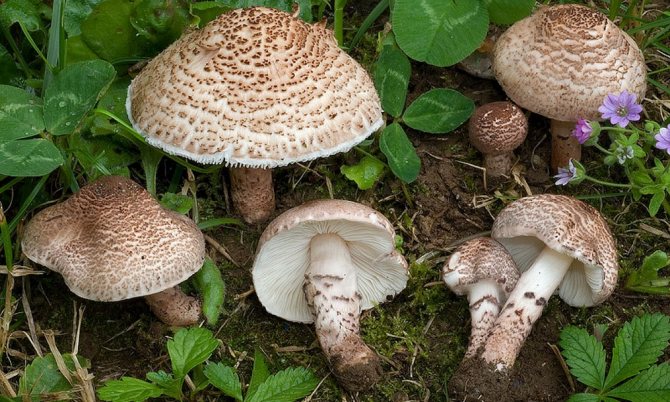

On the peninsula it usually occurs in October-November, most often in oak forests and parks. But only the daring of this baby is worse than that of the fabulous Chernomor, and has very sad statistics: a lethal outcome occurs in almost half of the cases of its use, and the mushroom, accordingly, is classified as deadly poisonous.
Possessing a very pleasant smell of roasted almonds mixed with aromas of flower honey, young fruiting bodies easily inspire confidence and do not cause the slightest suspicion in an inexperienced mushroom picker.
True, with age, the smell of the mushroom comes in line with its reputation, turning a wonderful aroma into a real amber, filled with "refined" gasoline-acetone ions with an admixture of autol.
The concentration of fast-acting poisons in it is so great that even one hat is enough to kill a person. Symptoms of poisoning appear rapidly after 10-15 minutes, and within 30 minutes, cardiac arrest may occur, so medical help is not always timely.
To the gloomy reputation of brown-red lepiota, it should be added that modern medicine does not know methods for deactivating the poisons it contains, and the ingestion of fungal spores into the respiratory tract can cause severe damage to the pulmonary-bronchial tissue.
This monster has a similar outward appearance, painted in more ocher tones - a brick-red lepiota, which also poses a mortal threat to humans. Fortunately, both types of mushrooms have no analogues with edible mushrooms.
Crimean poisonous mushroom # 9 - twins white spring fly agaric and white stinky fly agaric
The second place in the ranking of the most dangerous Crimean mushrooms was shared by two fly agarics: white spring and white smelly (white toadstool). Mushrooms are so similar to each other that some authors attribute them to the same species. Both grow in the forests of the mountainous Crimea. Their caps are usually the same size, painted white with a yellowish tinge in the center, and outwardly looks almost indistinguishable.
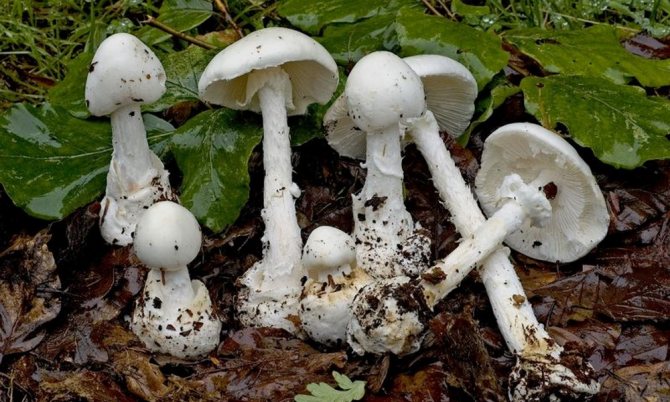

However, there are also differences, noticeable mainly only by experienced mushroom pickers. The first of them is more common on the peninsula, forms fruit bodies from June to November, the second, more rare, from September to October. There are some dissimilar nuances in the appearance of the mushroom legs: in spring ones it is smooth, and in smelly ones it is covered with a shaggy flocculent coating. Only the specific smell has a noticeable difference, in the spring fly agaric it is almost absent, and in the white toadstool it is nasty and the taste is unpleasant.
In terms of toxicity, these species are not inferior to the most poisonous mushroom of the Crimea, they have similar symptoms of poisoning and both are deadly poisonous. Young mushrooms, especially after rain, are covered with sticky mucus. If they are inadvertently taken in hand, then the particles of a sticky substance remain on the palms and, with further collection of mushrooms, they can get on them, be absorbed, and then harmless species will also become toxic. In this case, even with a light touch to fly agarics, you should immediately wash your hands, and even more so do not put dangerous finds in the basket.
Attention! It is easy for an inexperienced mushroom picker to mistake them for an ovoid edible fly agaric, a white float, some types of champignons, umbrellas and light-colored rows.
Edible Peninsula Species
In Crimea, there are about 200 types of mushrooms that can be eaten. The local population collects only 30-40 species. The most popular ones are:
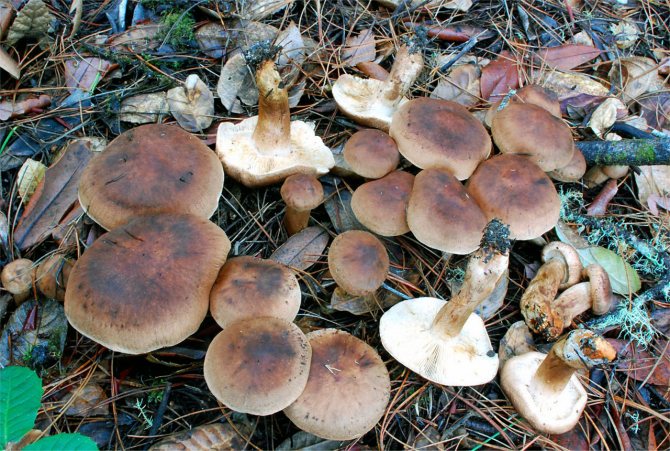

White mushroom. Has a wide, fleshy cap of a snowy or cappuccino color. From above it is even, and from below it is covered with plates with bridges. The leg is rather dense, thick and short (no more than 8 cm). Mushrooms usually grow in small groups.- Ordinary butterflies are edible field mushrooms of the Crimea, which cannot be confused with any other species. The brown hat is covered in mucus and is very slippery to the touch. Under it is a porous yellow pulp that resembles a sponge. The leg of the body is thin, of medium height (up to 10 cm).
- Autumn mushrooms grow in large groups. Their honey-colored caps, which are slightly curved inward, are covered with small brown scales. The height of the legs reaches 10 cm.
- Mice (row). The gray caps in young mushrooms are bent inward, while in old ones they are mostly flat with a tubercle in the middle and cracks along the edges. The legs are long and hollow.
- Chanterelles. Mushrooms are of a beautiful yellow color. A smooth cap has unfolded wavy edges. The leg tapers smoothly downward. The pulp is firm and practically odorless.
- Ryzhiki. Orange caps reach a diameter of up to 12 cm.Under them are plates of a red hue, which turn green from touch. The legs are hollow and thick.
- Pepper milk. The white hat with gray spots is a funnel. The leg is very short, tapering downward. There is also a dry lump with brown markings on the cap.
- Raincoats. The safest mushrooms. They are shaped like a ball or pear. The color of the flesh is white, sometimes there is a slight yellowish tinge. The cap is rough, covered with small tubercles.
Where black and white truffles grow in Russia
The rest of the edible mushrooms of Crimea are unsuitable for harvesting, as they are too small in size. Some specimens have a specific taste, so they are rarely collected by anyone.

